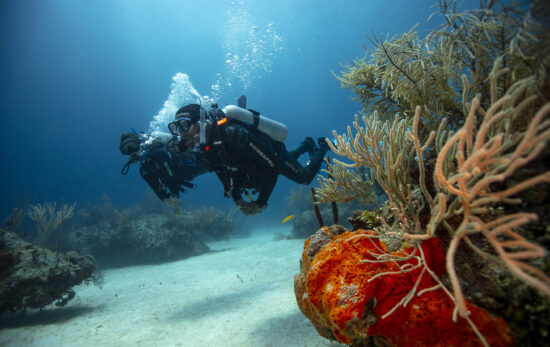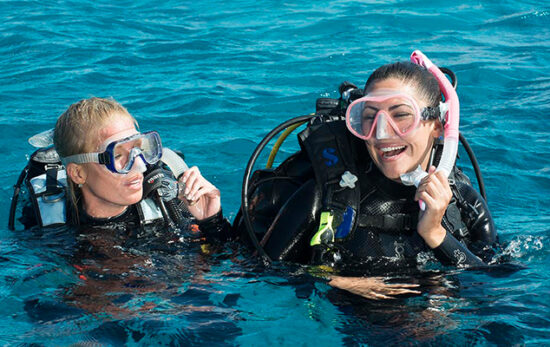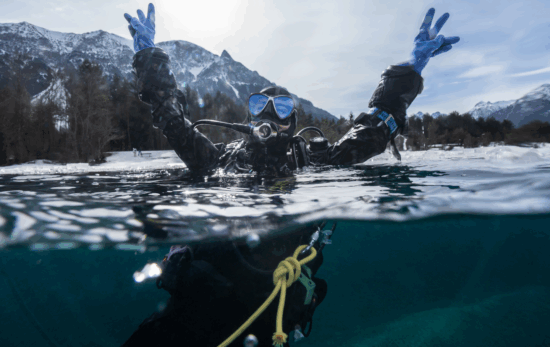Since humanity began, humans have questioned what lies beneath the deep. Untouchable secrets, just out of reach, have beckoned from the depths. Mysterious and often undeniably frightening, the concept of breathing underwater tantalized the pioneers of diving, just as it does for divers today. Let’s take a deeper look at the history of scuba diving.
An Introduction to the History of Scuba Diving
Scuba diving goes back many, many years. Even in Greek mythology, a warrior evaded Persian enemies by breathing through a hollow reed while remaining submerged beneath the sea. Persian divers, on the other hand, created goggles out of polished tortoise shells. Legend also says that Alexander the Great used a wooden barrel as an ancient type of diving bell. In the Ming Dynasty in China, divers upgraded from holding their breath to breathing through a long, curved pipe, attached to the face by a mask.
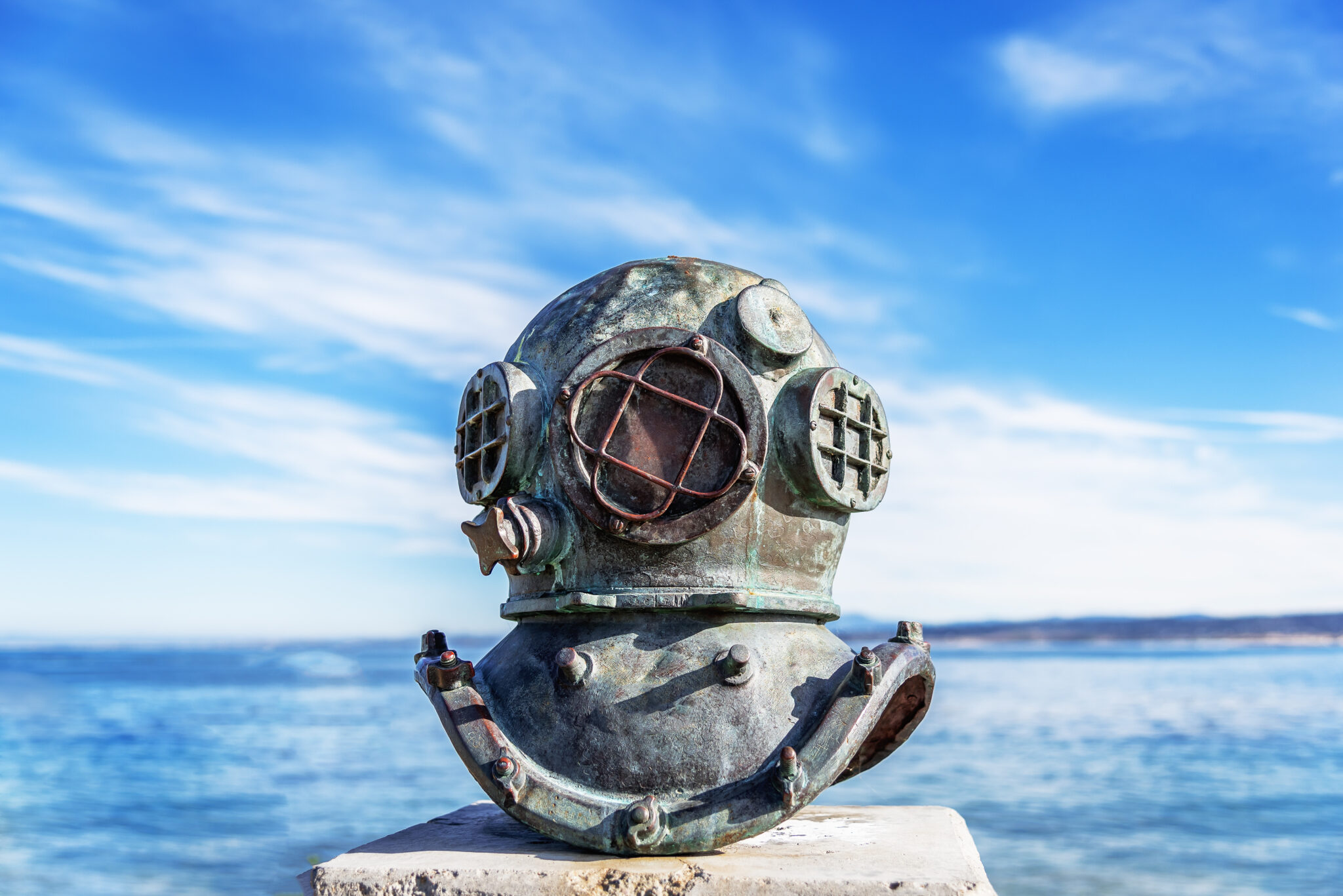
All ancient history aside, people have been freediving for food, sponges, and pearls for eons. In olden times, freediving deeper than 130 feet (40 meters) was common, all without the aid of any air or modern equipment. Today, many people all over the world still engage in this spectacular activity, either spear fishing or bringing up treasures from the deep.
Diving began to take leaps and bounds in the 1500s with the invention of the diving bell. People stretched the limits of physics and their bodies during these dangerous trips beneath the water’s surface, as very little was known about oxygen intake. During this time, more sophisticated equipment began to arrive.
Leather diving suits and diving helmets were developed, and air was pumped into these suits from the surface via long, flexible hoses when the air pump was invented in 1771.
It wasn’t until the 1800s that studies took place on decompression sickness and the effects of water pressure. Two men developed the first compressed air tank and a simple regulator – the first huge step towards modern scuba diving.
Surprise! Harry Houdini even had a hand in the realm of scuba diving. Because of his work as an escape artist, he would often be trapped beneath the water. His ingenuity was undeniable, and he invented a dive suit in 1921 that was easy to get out of. Now, divers could quickly rid themselves of their suits if they became tangled or trapped, thus saving their lives.
Diving became even more accessible in the 1940s thanks to the genius of Emile Gangnan and Jacques Cousteau. Together, they invented the first modern demand regulator and improved the diving suit. They named their regulator “Aqua Lung”, and it completely transformed the diving world. Today, Aqualung is still a prominent and reliable manufacturer of diving equipment around the world.
Much of the more modern scuba diving equipment has been developed, unfortunately, due to warfare. From diving bells to submarines, the ability to head beneath the surface and stay there for extended periods of time is of great importance during a siege. Keeping divers safe became a priority, and new and improved equipment was a necessity.
Heading Beneath the Surface
Can you imagine being the first person to use a diving bell or metal scuba helmet? Or to head under the surface with nothing but a rubber hose in your mouth? To say that these innovators were brave would be a massive understatement. The danger involved was astronomical, but these pioneers paved the way for generations of explorers to follow. It’s safe to say the history of scuba diving is filled with risk-takers.
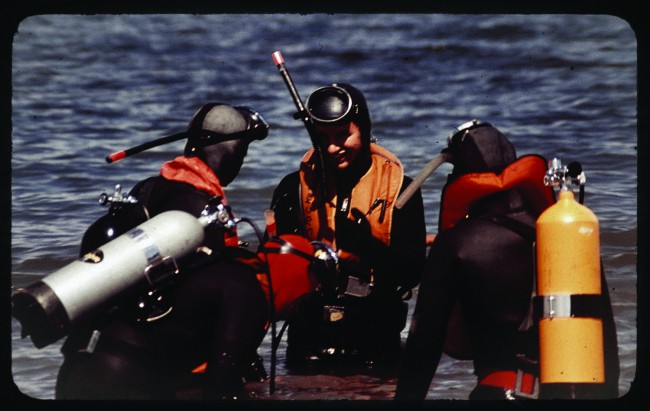
Without such courageousness, there is no way we could have explored even a fraction of what we have seen. Though much of the world is undiscovered, scuba diving has given us the keys to the locks that have remained steadfast since time began.
Scuba diving has evolved heavily over the years, and we would do well to pay some homage to those who lived and died making scuba diving the wonderful sport that is today. Many of these scuba diving legends have been recognised by the ISDHF (International Scuba Diving Hall of Fame) which inducts new members annually.
Influential Divers in the History of Scuba Diving
Because of their determination and ingenuity these divers should be mentioned in any history of scuba diving. Without the work that these fine individuals put into the field, there is a good chance that none of us would be scuba diving today. Thanks to their dedication to exploration and discovery, together we can continue to create and discover.
Yves Paul Gaston Le Prieur (1885 – 1963)
A member of the French Navy and a worldwide traveler, Le Prieur was no stranger to the sea. A character unlike any other, Le Prieur was the first man to take off in a plane from Japanese soil, and was the first Frenchman to earn a Black Belt in judo.
In 1926, Yves le Prieur created the first S.C.U.B.A., or Self Contained Underwater Breathing Apparatus. He was inspired by previous versions of scuba gear, but knew that the tube that ran from the diver to the surface was a hindrance and a safety hazard. He created a new device that consisted of compressed air contained in a cylinder and a simple pressure regulator. For the first time ever, humans could breathe underwater, on their own. Though you couldn’t stay under for very long, the concept took off, giving engineers and scientists a template to work off of for years to come.
His next big invention was the full face mask, which replaced the Fernez goggles. Fernez goggles clenched tighter and tighter to the diver’s face as they descended, often leading to disastrous consequences and “mask squeeze.” The full face mask was connected to the breathing apparatus, so pressure was maintained between the two. Now, you could dive far deeper than the previous 32-foot (10-meter) limit.
Lloyd Bridges (1958 – 1961)
An unexpected name to add to this list is Lloyd Bridges, the lead character in the hugely popular television show “Sea Hunt.” Running between 1958 and 1961, Sea Hunt flickered on TV screens across the globe. Often narrated, Bridges’ character Mike Nelson dove to the seafloor to find sunken treasure or downed satellites, surrounded by flitting fish and odd creatures.
Because of his underwater antics, the world was introduced to the submarine seascapes, with all of their wild and weird wonders. People began to want to experience the depths for themselves, and scuba diving became a fresh, widespread pastime. Thousands of people geared up and headed beneath the waves: the very first batch of mainstream recreational scuba divers.
Sylvia Earle (1935 – today)
In addition to being an incredible marine biologist, author, and explorer, Sylvia Earle was the first female chief scientist of the U.S. National Oceanic and Atmospheric Administration. Not only that, but she set the women’s depth record of 1,250 feet (381 meters) in 1979 during a trip to Oahu.
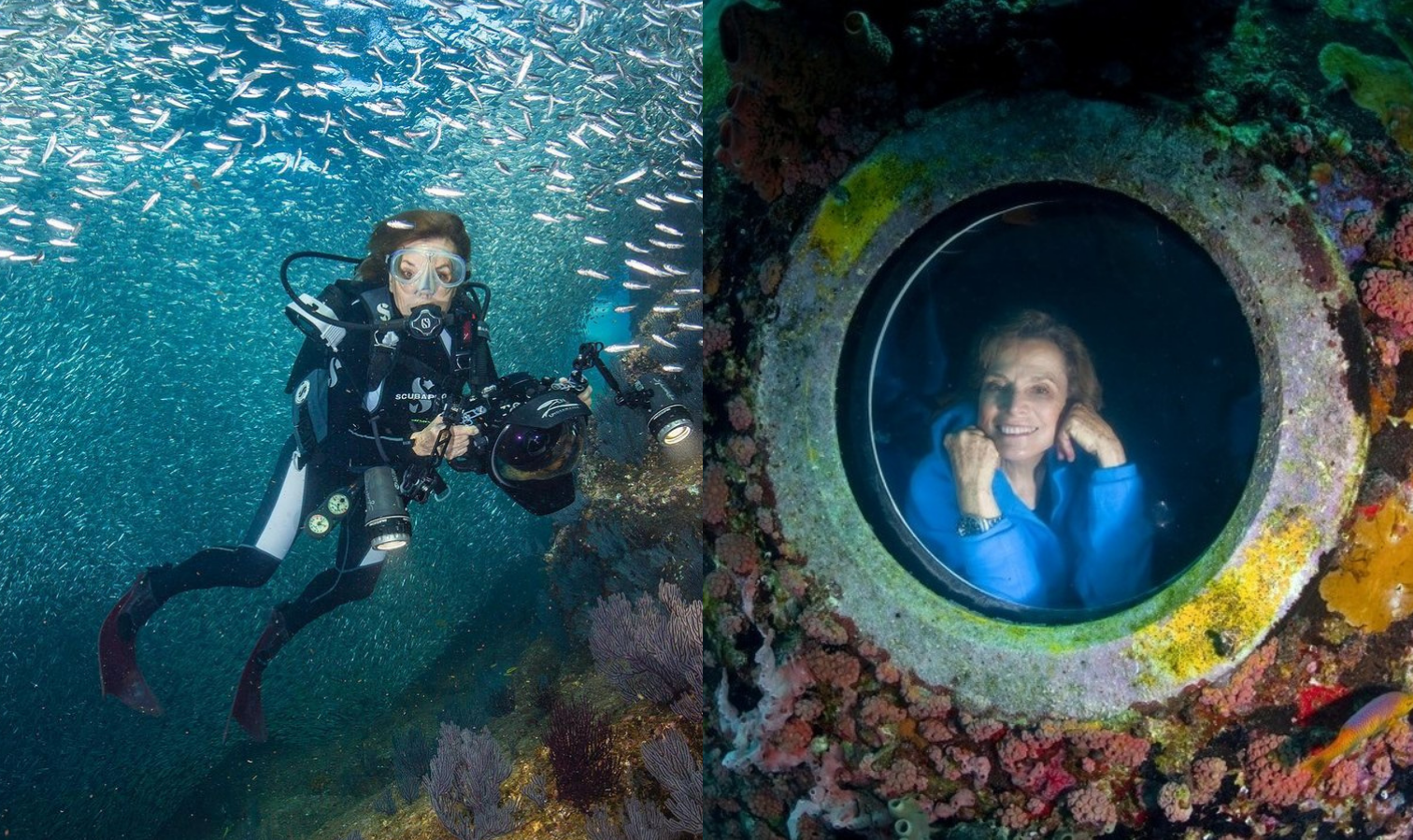
She and her husband, a submarine designer and engineer, designed the Deep Rover, a research submarine that could go to depths previously unexplored, up to 3,300 feet (1,000 meters). She then furthered her focus in marine engineering by founding the Deep Ocean Exploration and Research, creating equipment to explore the deepest of the deep.
In 1998, she was named by Time Magazine as their very first “Hero for the Planet,” because of her work in biology and engineering. She also became a National Geographic Explorer-in-Residence, where she is often referred to as “Her Deepness.” Dr. Sylvia Earle is widely held as a prominent figure in the history of scuba diving, marine conservation, and exploration.
John Cronin (1929 – 2003) & Ralph Erickson (1922 – 2006)
The co-creators of PADI (Professional Association of Diving Instructors) revolutionized the way scuba diving works today. In 1966, when this pair founded PADI, it became simple for anybody to become a diver by learning skills and earning a series of certifications. Millions of people are now certified scuba divers, and diving has reached new, astounding heights thanks to their ingenuity.
John Cronin, in addition to being one of the most influential people in the diving industry, was the President of the Diving Equipment Marketing Association and completed nearly 50 years in the scuba diving industry. In 1969, he was named the CEO and President of U.S. Divers, a title that he maintained until his retirement.
Ralph Erickson was always at home in the water, forming a swimming school in 1959 after his stint in WWII. Always at the forefront, he became instructor #35 in the very first class of NAUI Instructors. He wrote a book about scuba diving titled “Under Pressure”, and he used it during his classes to teach students what he knew about diving. He received multiple awards and recognition late in his life, and was even elected into the International Scuba Diving Hall of Fame.
Jacques-Yves Cousteau (1910 – 1997)
Synonymous with scuba diving is the name “Jacques Cousteau.” As one of the co-inventors of AquaLung, Jacques Cousteau was more than a pioneer, he was one of the most influential leaders in the scuba diving field and is a well-known figure from the beginning of the history of scuba diving. The AquaLung allowed divers to dive for much longer, and to go deeper than ever before.
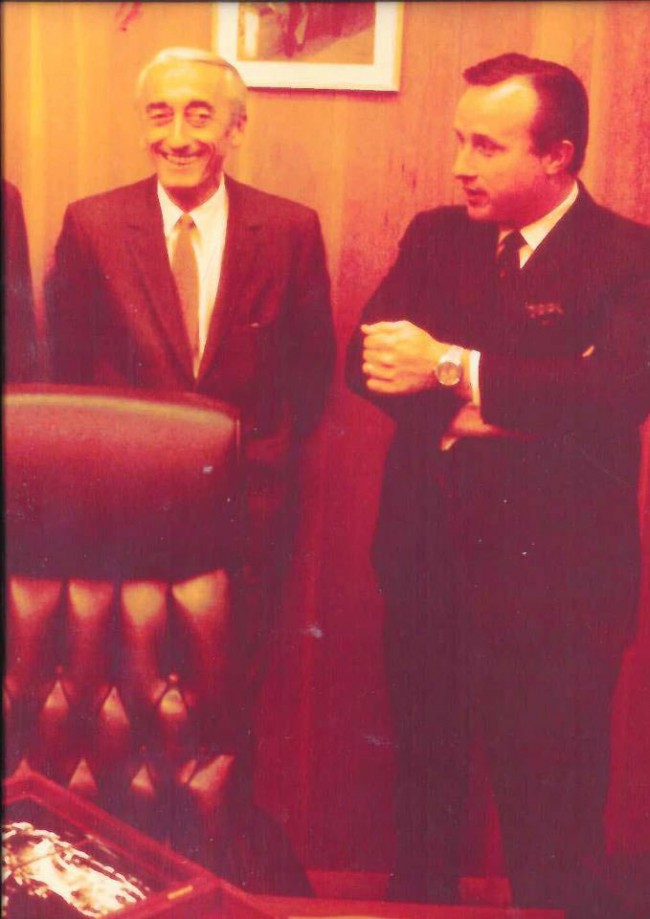
Jacques Cousteau had the desire to make the unknown known and he did all he could to share all that he had seen with the general public. Throughout his life, he focused on marine conservation and teaching others about the joys of scuba diving. He wrote books about what he saw deep under the water, sharing his observations with the world.
Throughout WWII he focused on creation, not destruction. He convinced an Admiral in the French Navy to allow them to form the Underwater Research Group, using his newly developed aqualung to maneuver through minefields, explore archeological wrecks, and conduct depth tests. This research changed scuba diving forever.
In 1956 Cousteau also created his own submarine, known as a “diving saucer.” He used this first generation of submarines to make films about the underwater world, heading down to over 1150 feet (350 meters). Not soon after, he created a version that could go even further down, to 1600 feet (500 meters). With these submersibles, he created the renowned documentary called The Silent World, which won a highly esteemed award at the Cannes Film Festival.
Until the end of his life in the 1990s, Cousteau continued to write, dive, teach, and learn. He starred in several films and television shows, and even received a Presidential Medal of Freedom from Ronald Reagan.
His genius has brought us beautiful and perspective altering quotes, teaching and guiding us. One of his most famous sayings was this, “The sea, once it casts its spell, holds one in its net of wonder forever,” an idea that resonates with any scuba diver or lover of the sea.
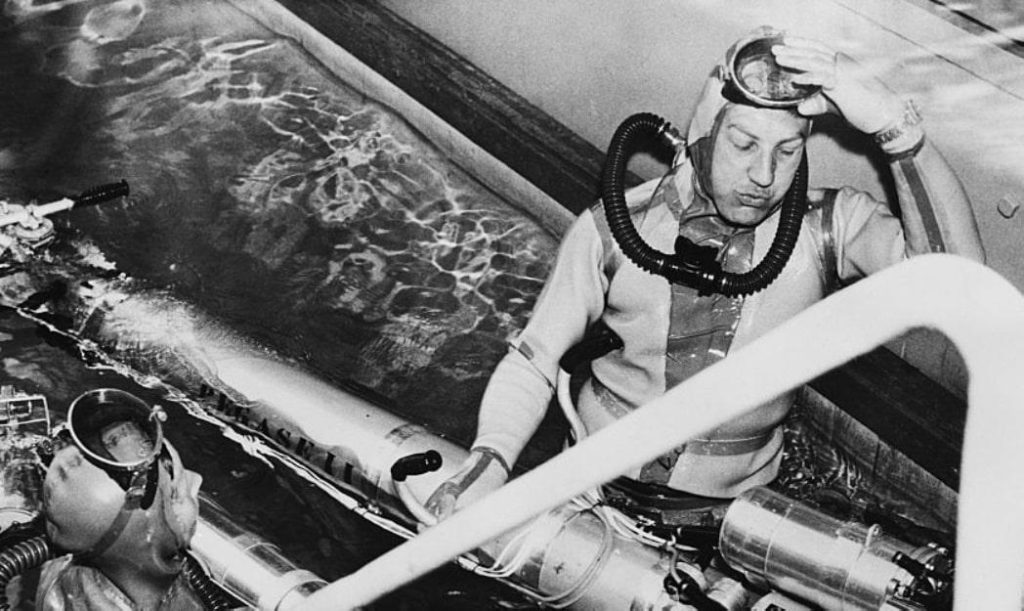
Demitri Rebikoff (1921-1997)
Dimitri Rebikoff developed and manufactured the first portable electronic underwater flash in 1947. He also developed and constructed the first underwater scooters (in 1952 the Torpille, and later the Pegasus), and his accomplishments continued with the development of the first submersible remotely operated vehicle (ROV).
Rebikoff was also an active member of the first recreational aqualung diving club (Club Alpin Sous Marin), which developed underwater cameras for Jacques Cousteau and other pioneering divers at the time.
Furthermore, Rebikoff wrote and published several books and articles over the years, including Exploration Underwater (Exploration Sous-Marin) in 1952, a year before Cousteau’s groundbreaking film The Silent World. Eventually, he moved to the USA and worked on various secret projects for the US Navy. Rebikoff was also inducted into the International Scuba Diving Hall of Fame, posthumously, in 2015.
Boris Porotov (1930s – today)
Boris Porotov (originally from Kazakhstan) was a self-taught scuba diver in Russia in 1960, at a time when no commercially manufactured equipment or instruction material of any kind was available. He learned by trial and error and was able, with extremely limited resources, to instruct others to scuba dive. In 1963, he led a group of divers to the Sea of Japan, returning two years later to make a scuba diving film that aired on Soviet TV – bringing the underwater world to a region that knew little of what lay beneath the surface. In 1965, his dedication to the sport lead Porotov to establish the scuba diving club DIVE, which was one of the first scuba diving clubs in Russia.
Most famously, in 1969 he developed and created the monofin. The arrival of the monofin in freediving circles in the early 1970s led to the breaking of all finswimming world records by the end of the decade due to the improved performance possible when used instead of two ordinary fins.
His skills as an instructor in competitive scuba diving contests gained his students numerous world records, and he was eventually assigned to train the Soviet Navy’s Special Underwater Forces.
Porotov went on to receive numerous Soviet awards for his instructional work and in 1991, he and his wife became Handicapped Scuba Association (HAS) instructors and opened their own school in the Black Sea port of Sebastopol.
We’re Just Getting Our Fins Wet
Scuba diving is still making leaps and bounds, with new and groundbreaking equipment being designed and utilized every year. Little tweaks have brought our masks, fins, and snorkels to new highs, making diving and snorkeling more comfortable and convenient. Snorkels have purge valves, fins can be flexible or split, and masks are made of tempered glass, keeping us safe at extreme depths – and can even be manufactured with prescription lenses.
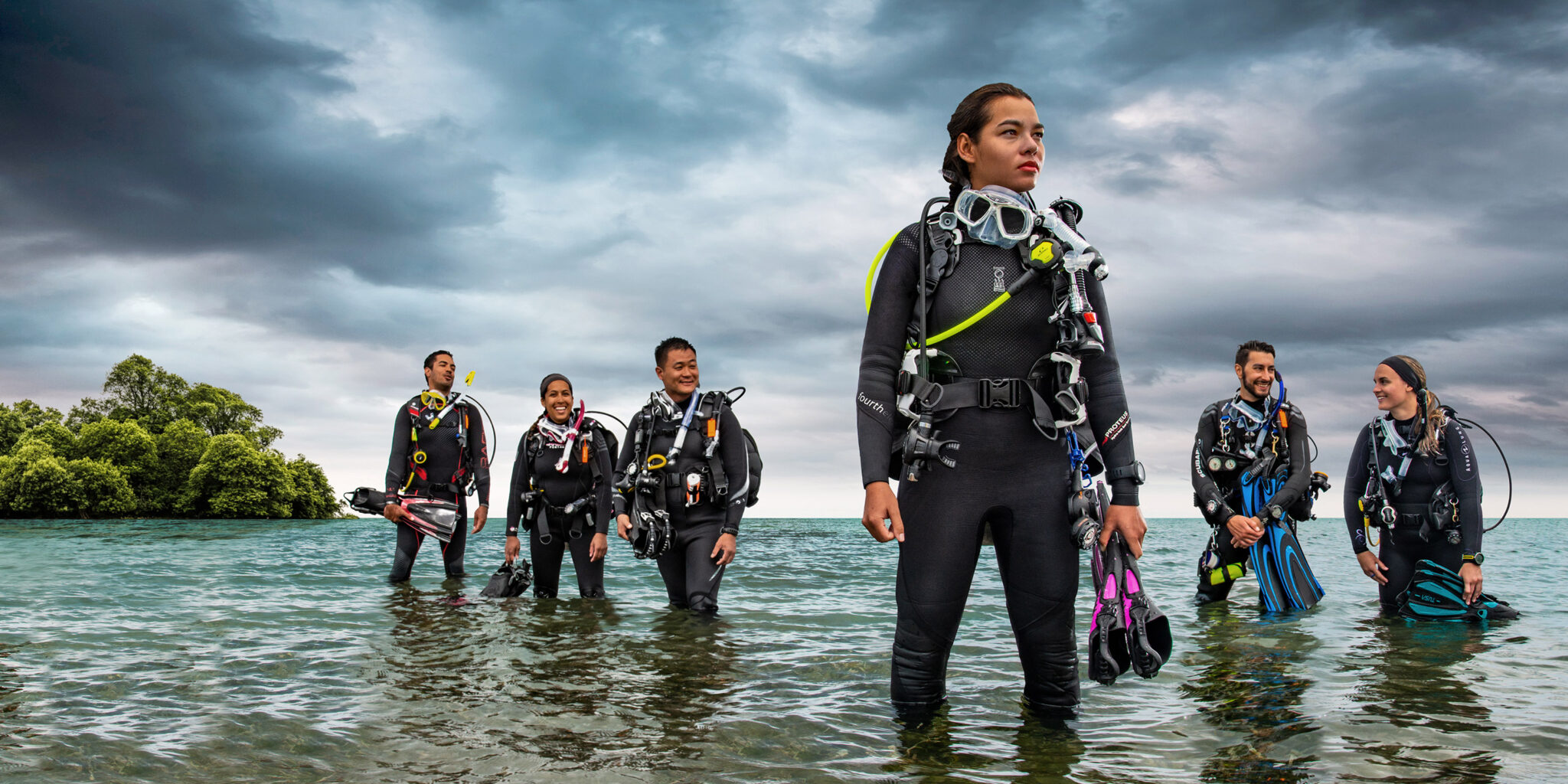
Drysuits have been recently improved, making cold water diving a cinch. Though divers have finagled drysuits for many years, it was not until fairly recently that they were available so readily to the masses. One of the most recent developments in scuba diving is the invention of the LED light, which aids divers in illuminating the intense darkness of the underwater world.
All of this new equipment helps us to dive more, living out what scuba diving greats like Jacques Cousteau dreamed for us to do. With constant developments in underwater imaging equipment, the underwater world that was once so distant and frightening is slowly but surely coming into focus, every year bringing more and more divers into the field. Because millions of scuba divers are now certified, more dive shops are opening and dive sites are being discovered. The scuba diving community is discovering each untouched corner of the sea, bit by bit.
Oceans cover 71% of the surface of the globe, and more than 95% (yes, 95%!) of the Earth’s underwater world is unexplored. Those outrageous statistics combined with our unquenchable lust for knowledge will continue to bring people deep into the waters of the world, where we will learn more and more on every dive we accomplish.
Want to Learn More about the Sport of Scuba Diving?
If you aren’t already scuba certified, start your Open Water Diver certification course online today. Scuba diving is certainly exciting to read about, but it’s even cooler when you’re actually doing it. Once you’re certified as a diver, check out PADI’s continuing education courses or visit PADI Travel for more information on dive destinations, dive centers, resorts and liveaboards around the globe.
This blog was originally written by Bridget Pearson and published on the Diviac Magazine.
